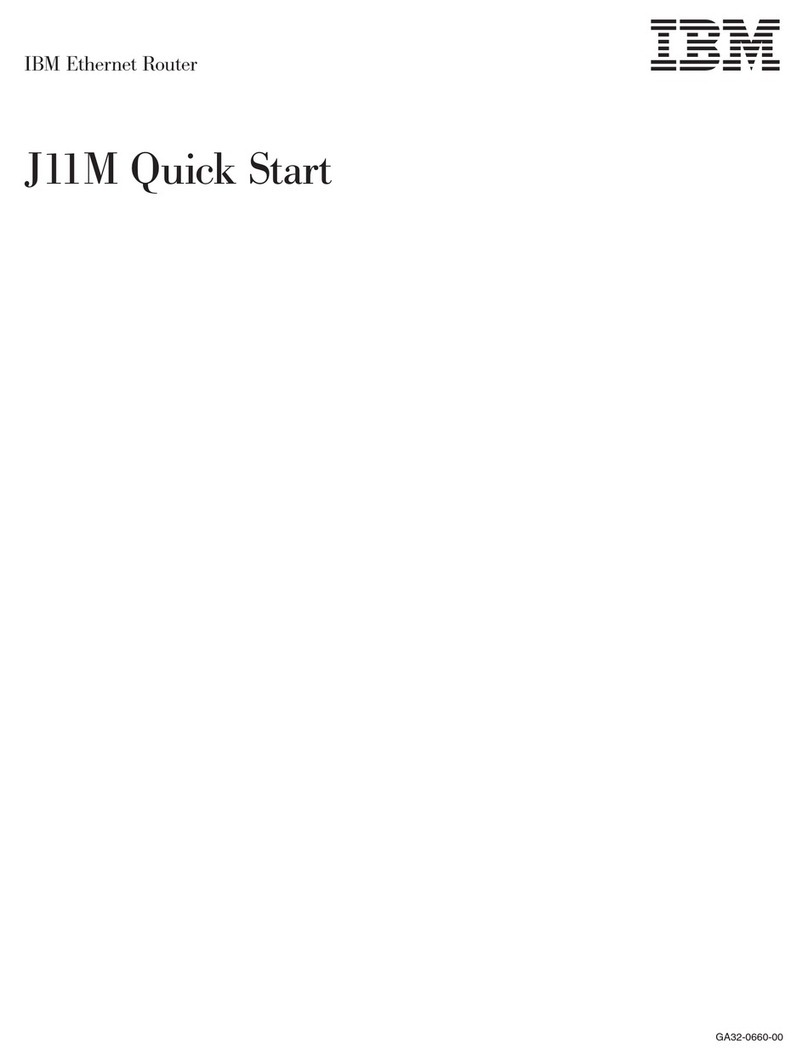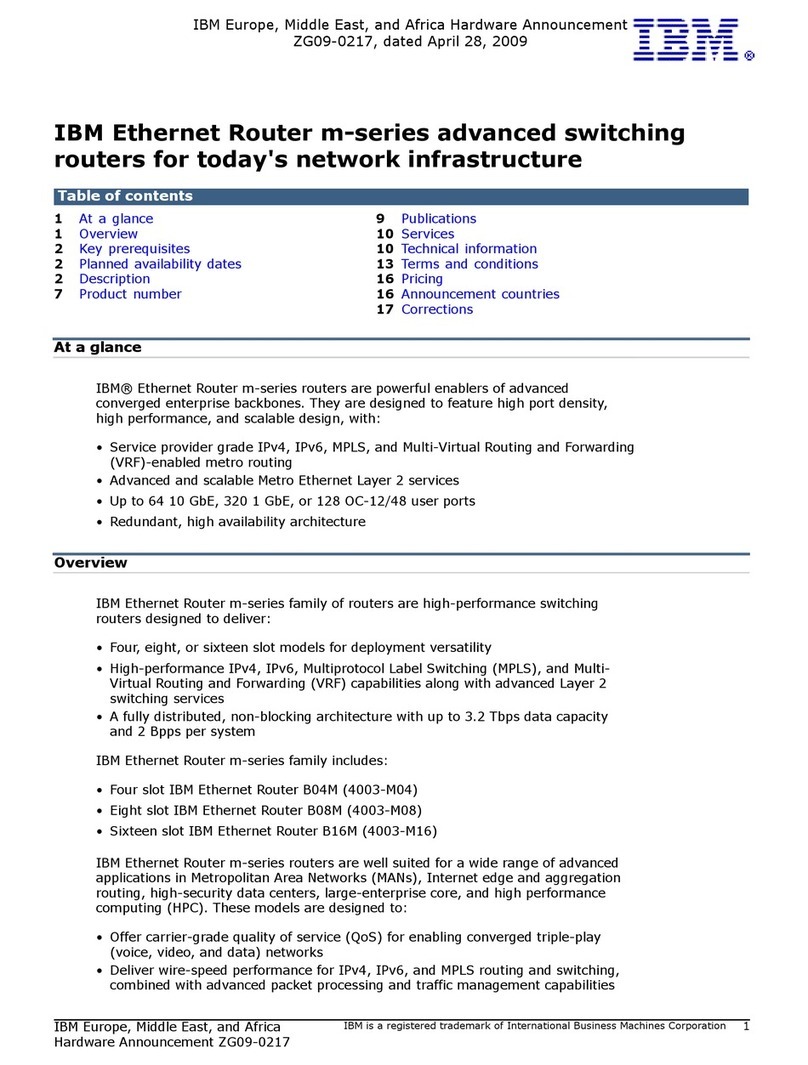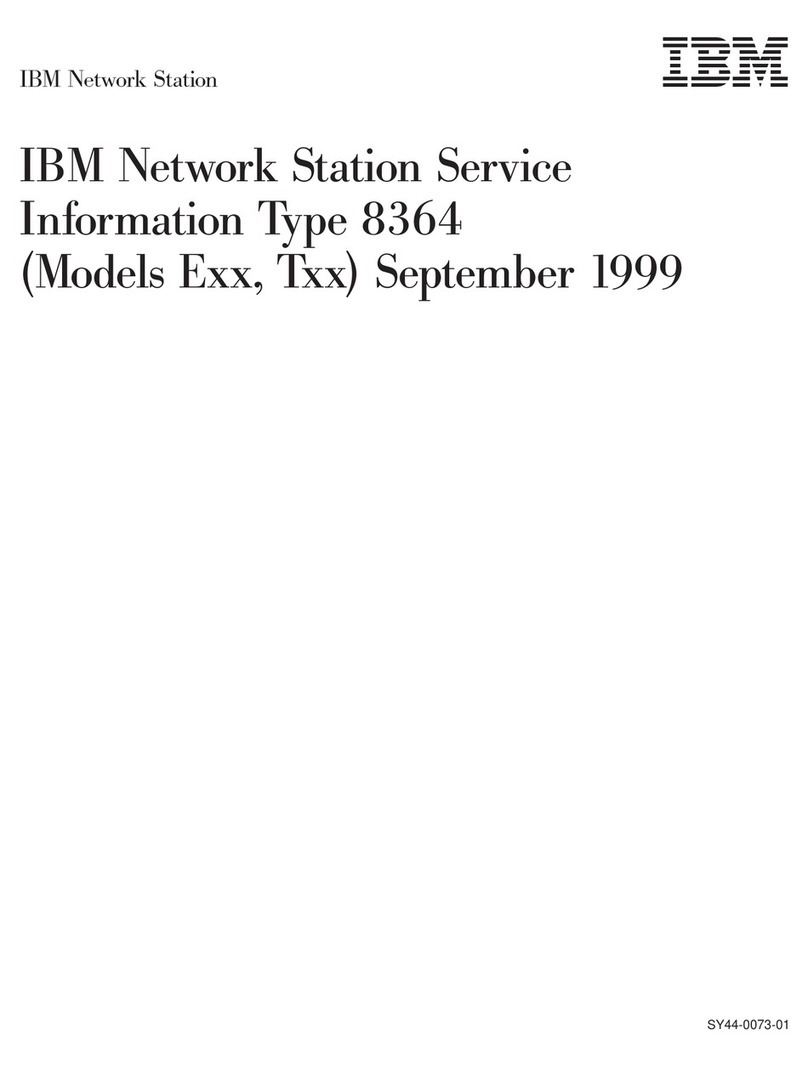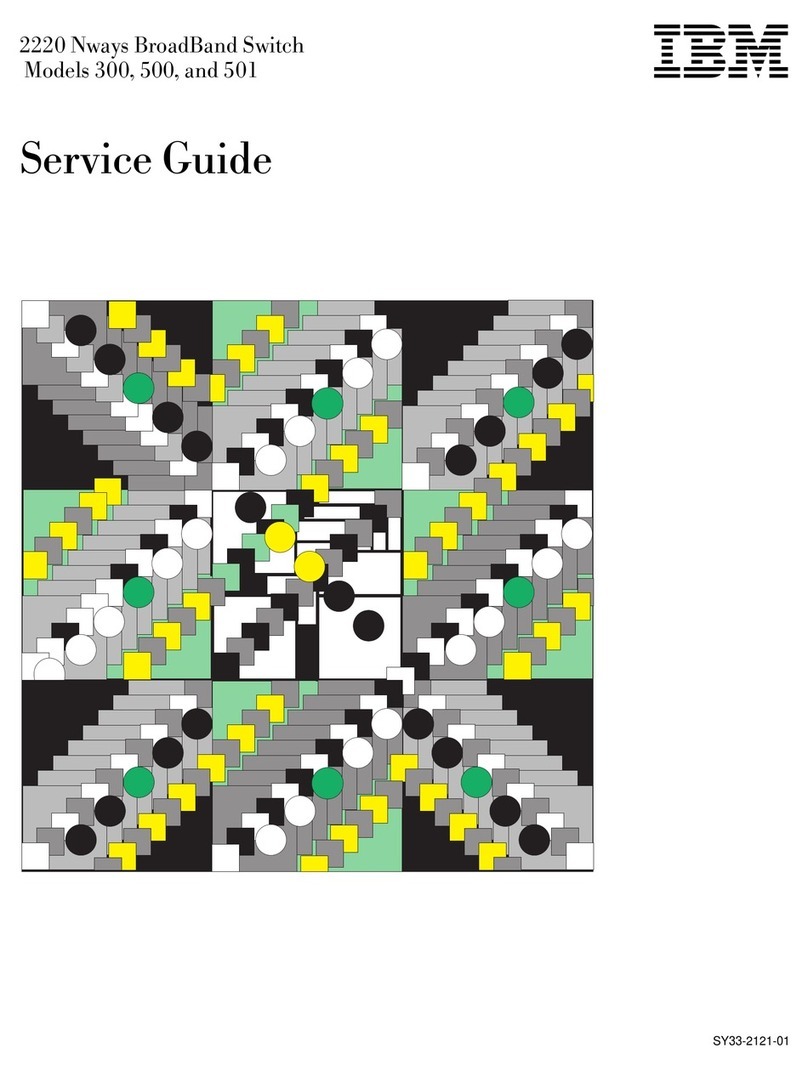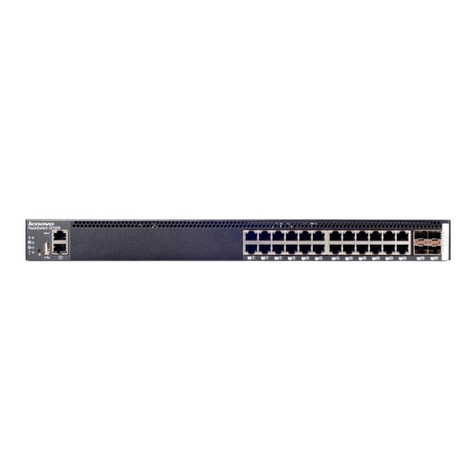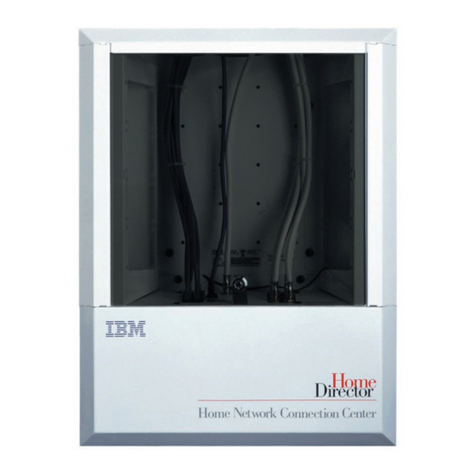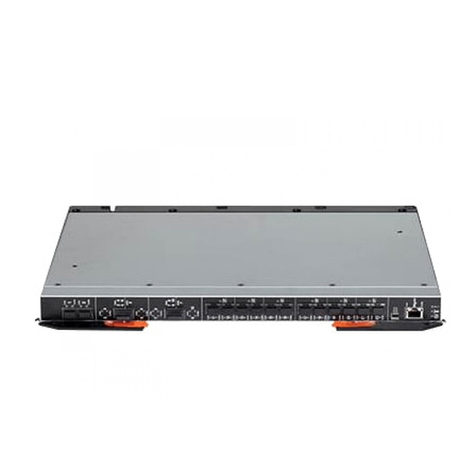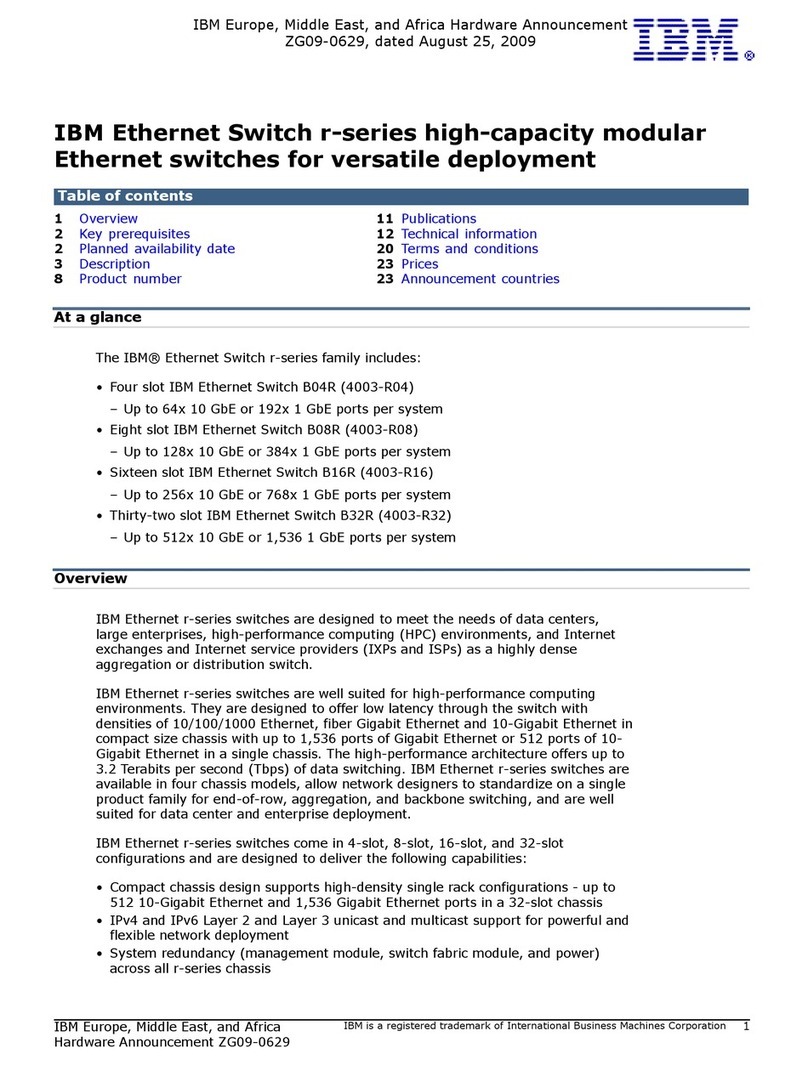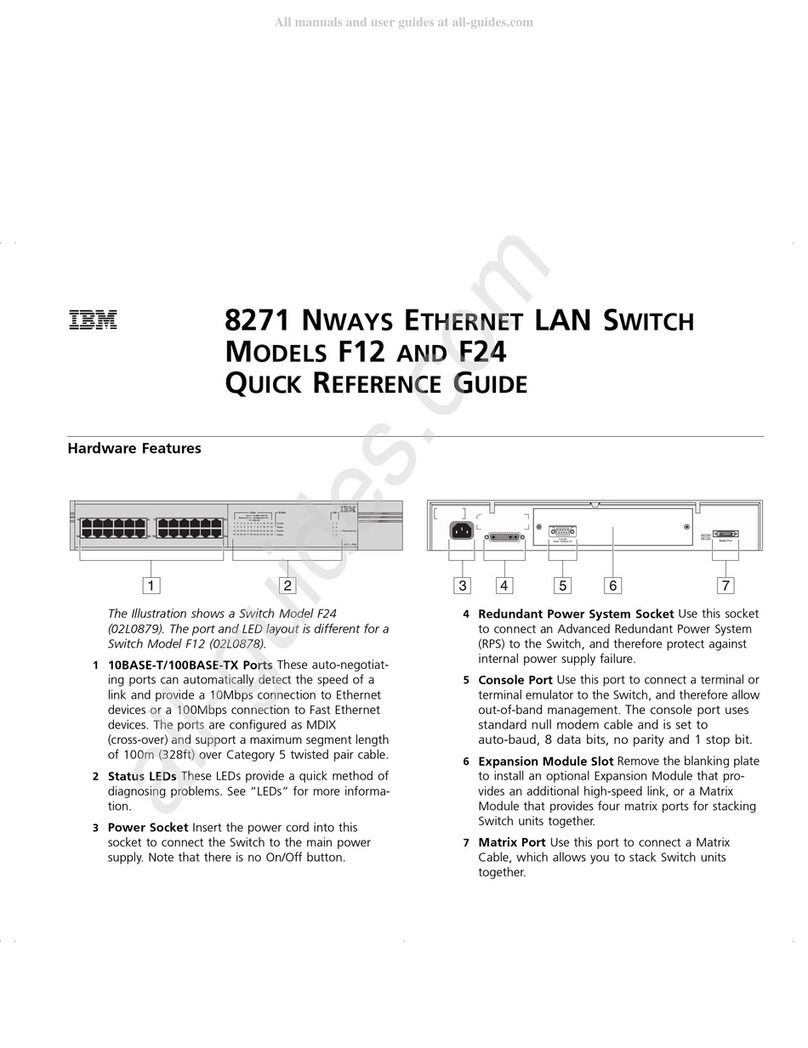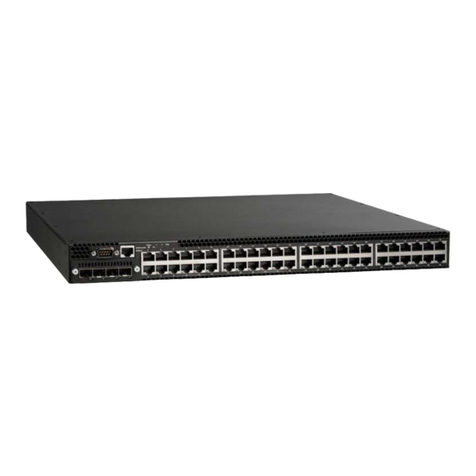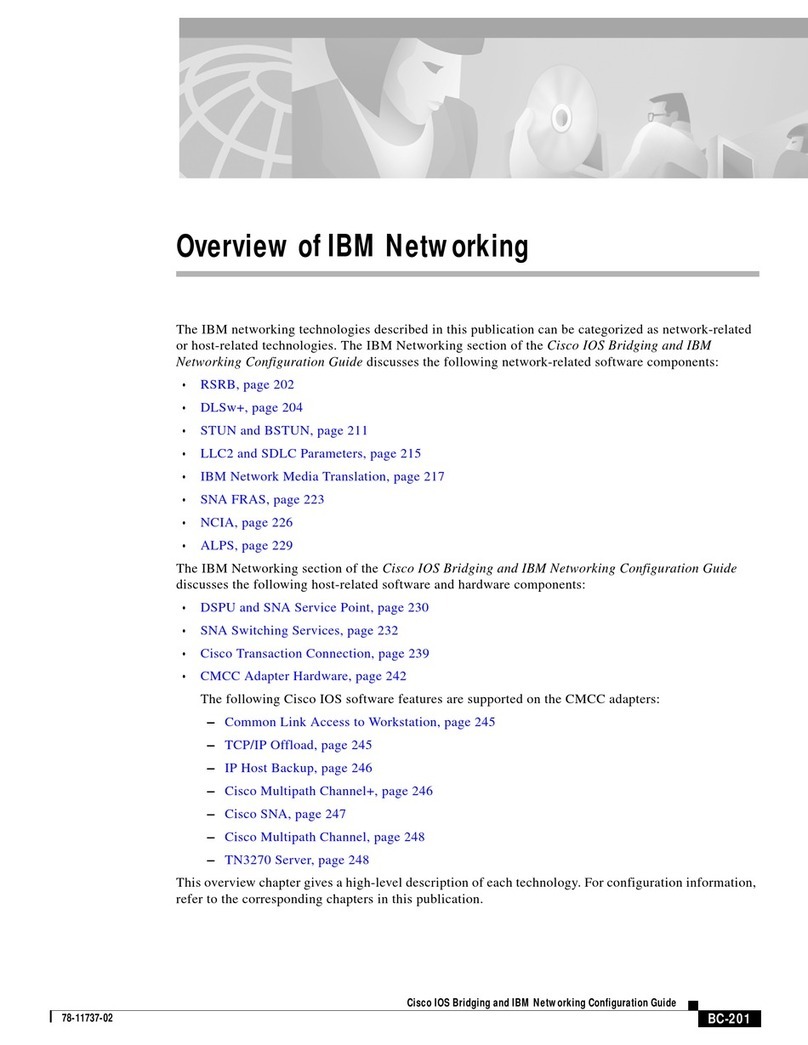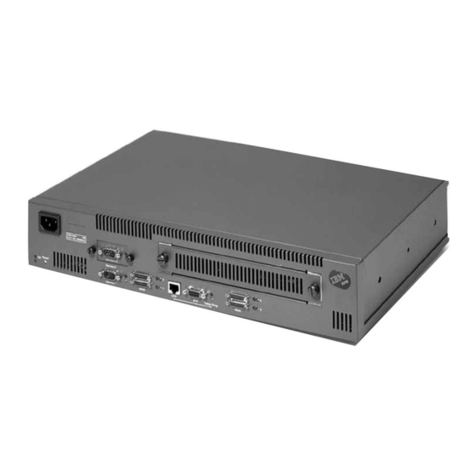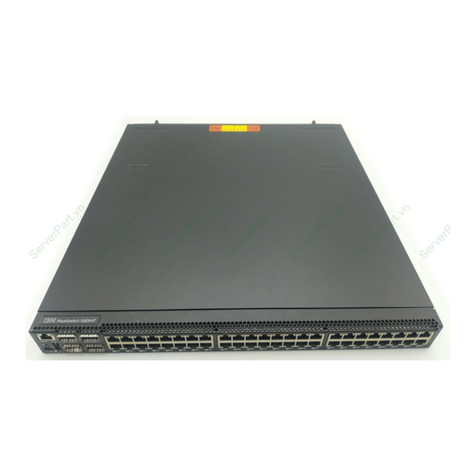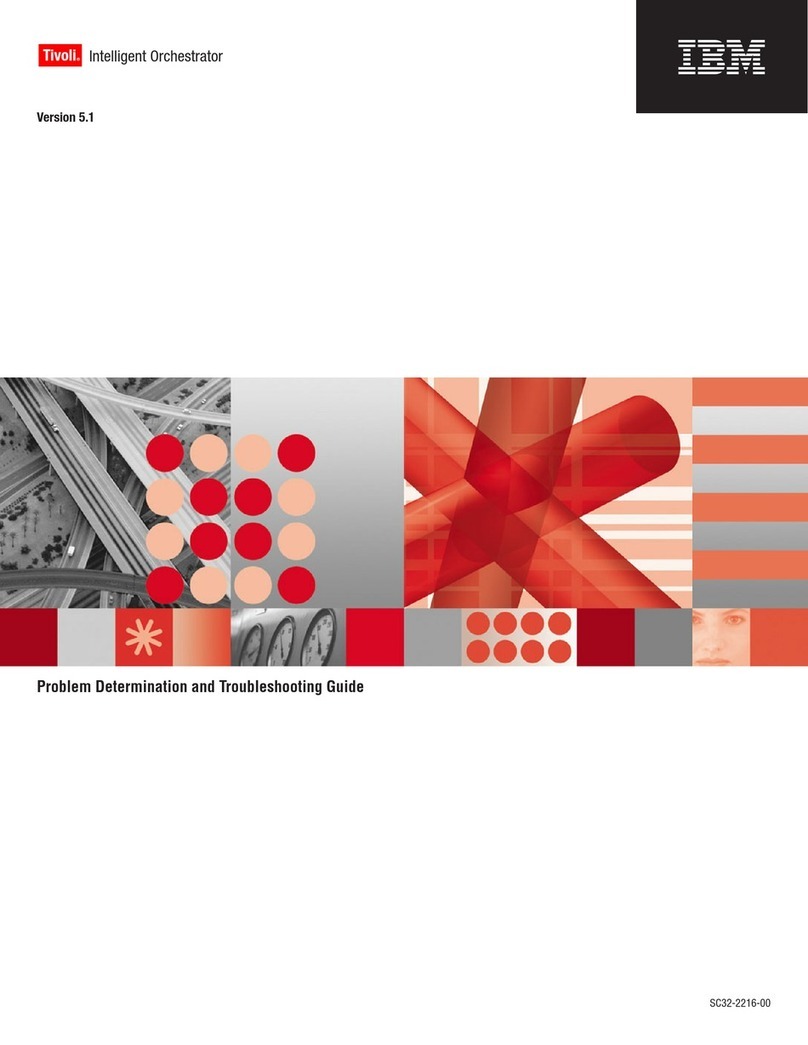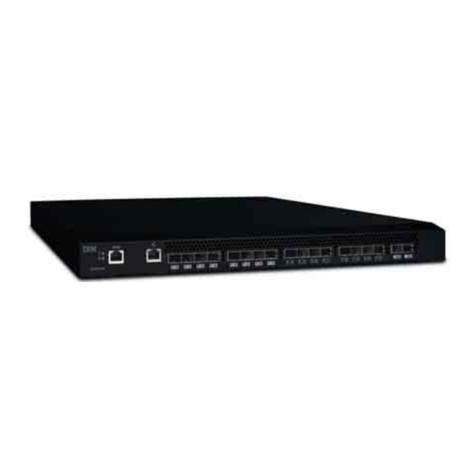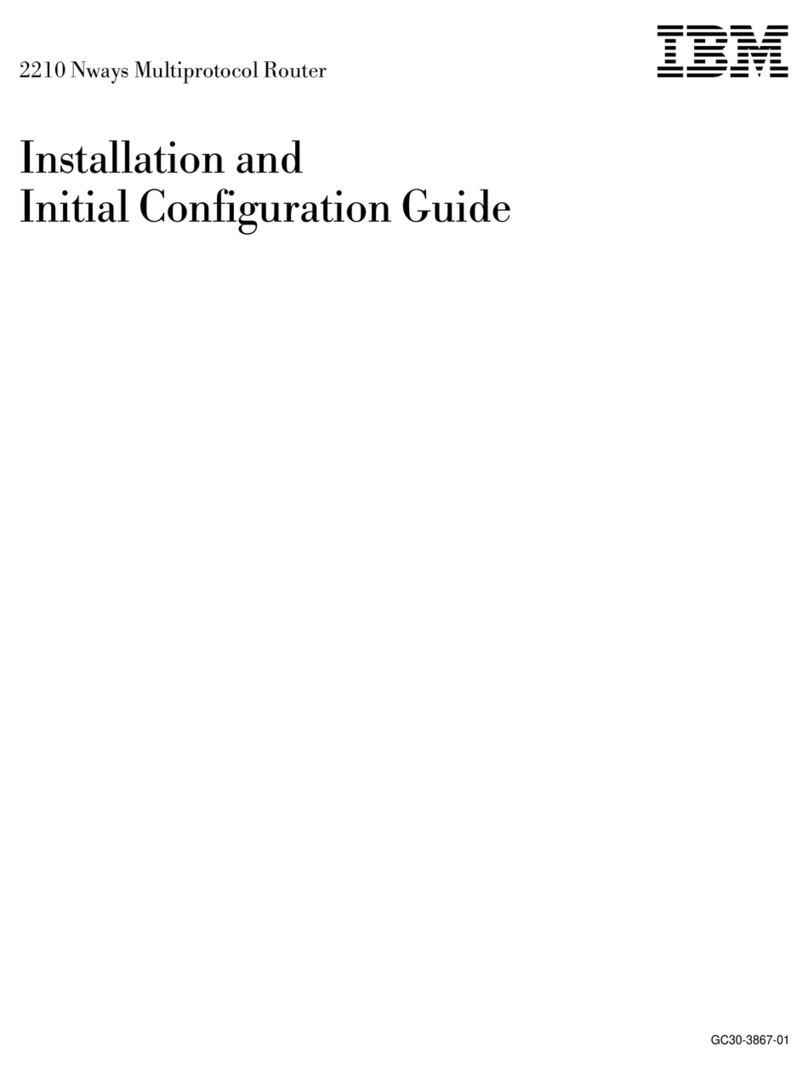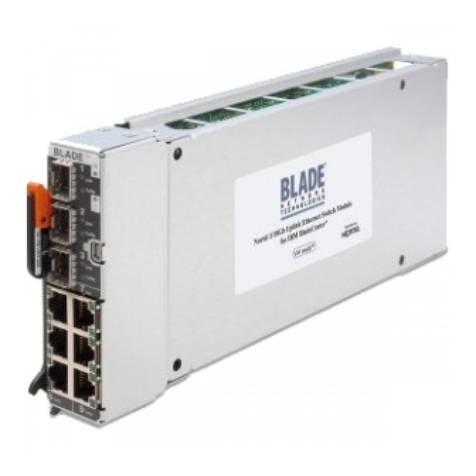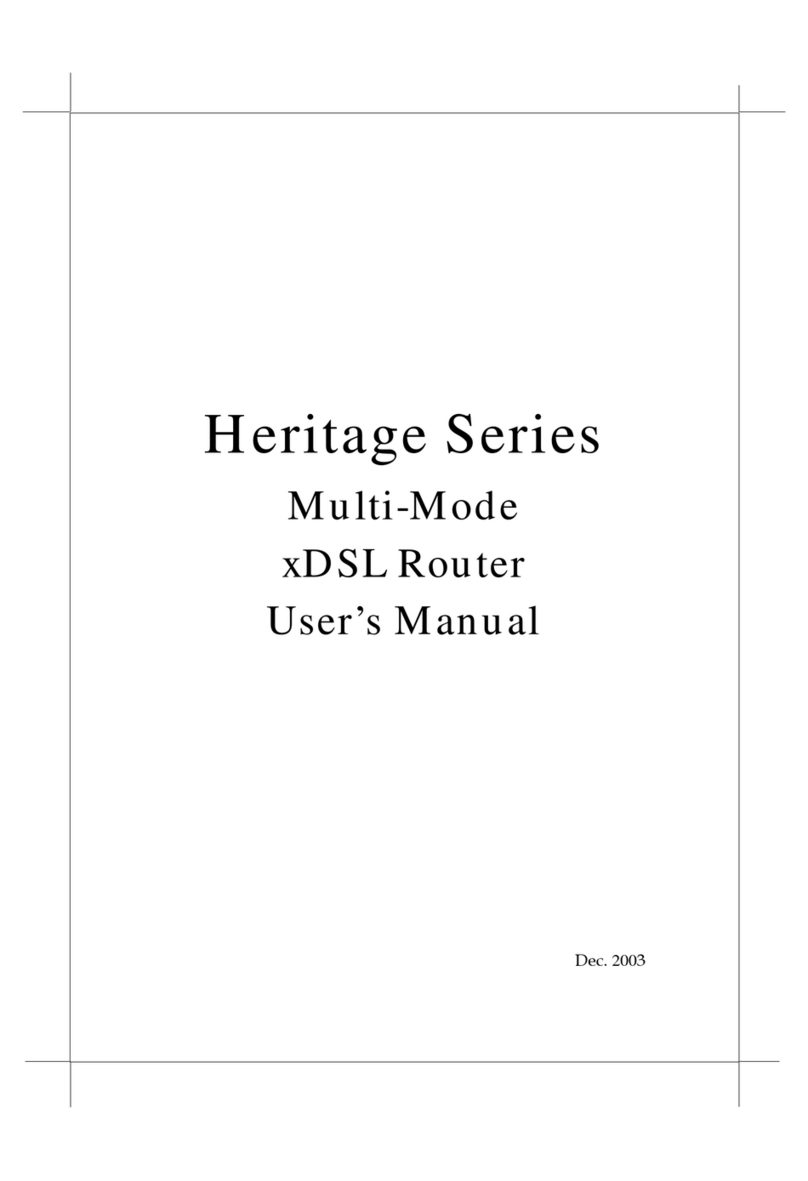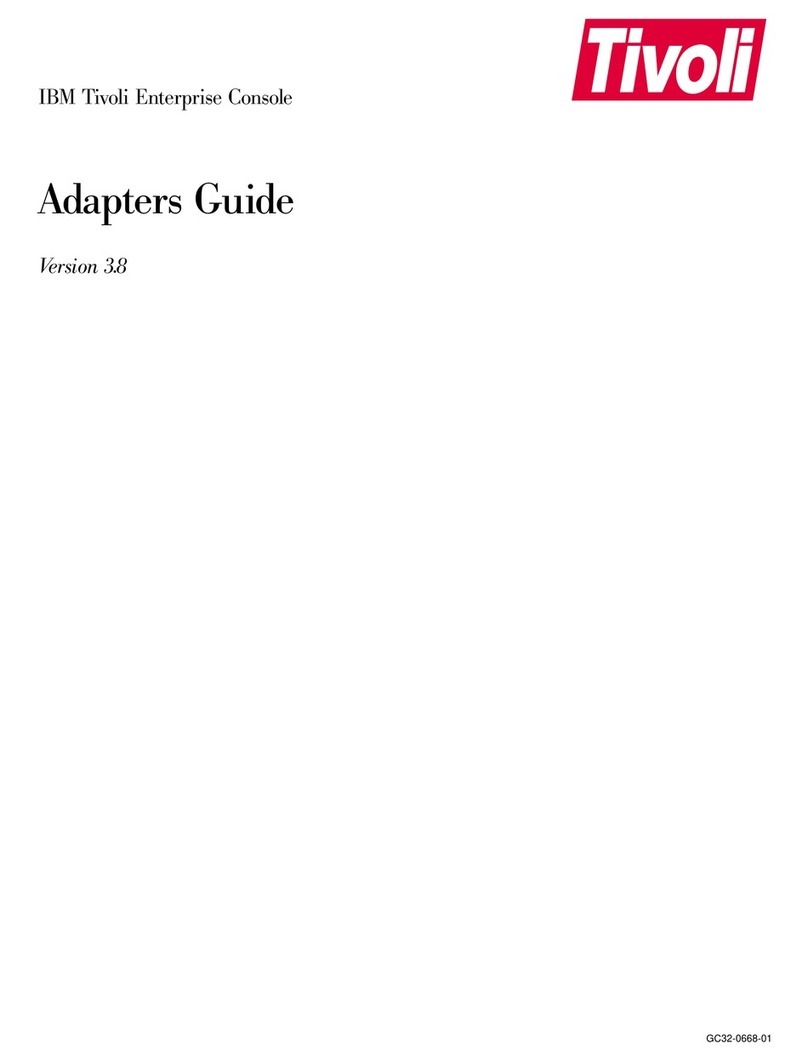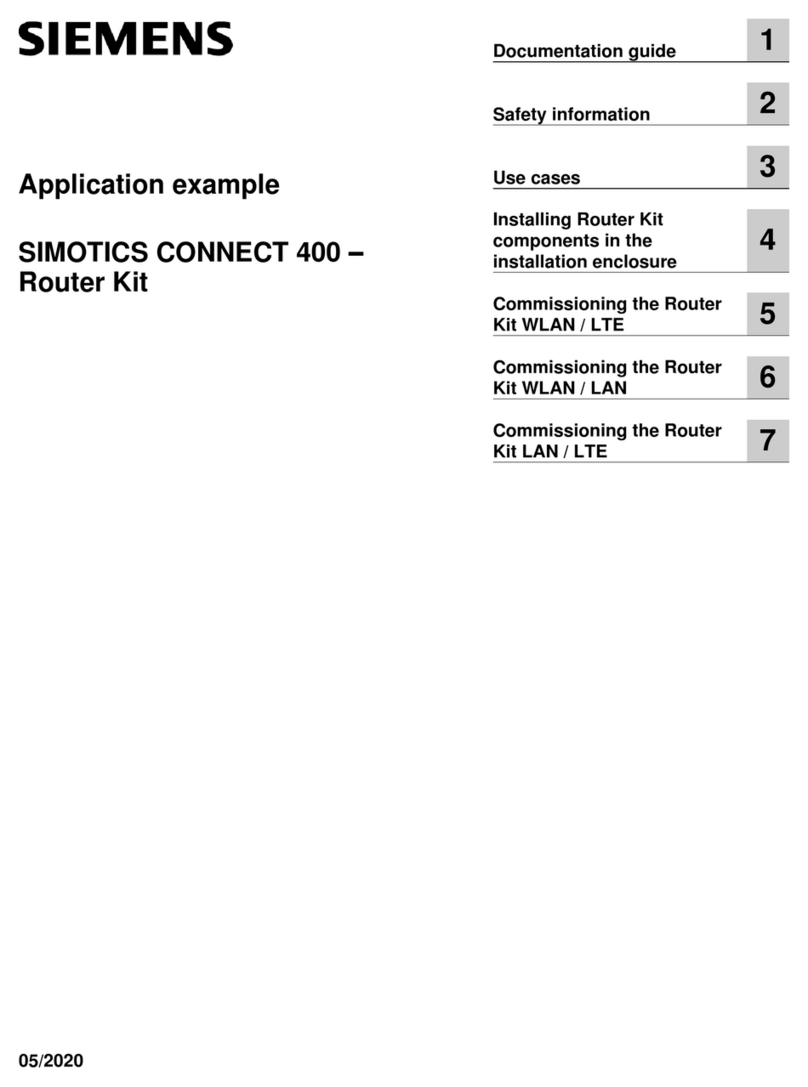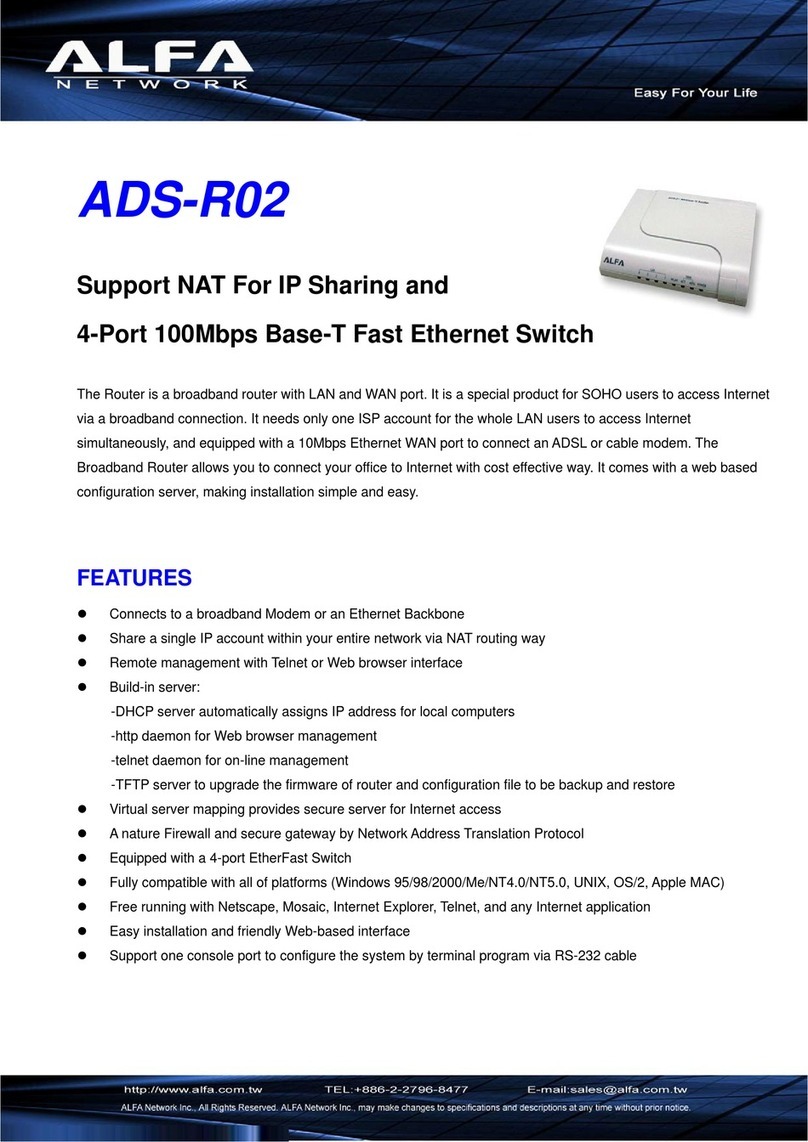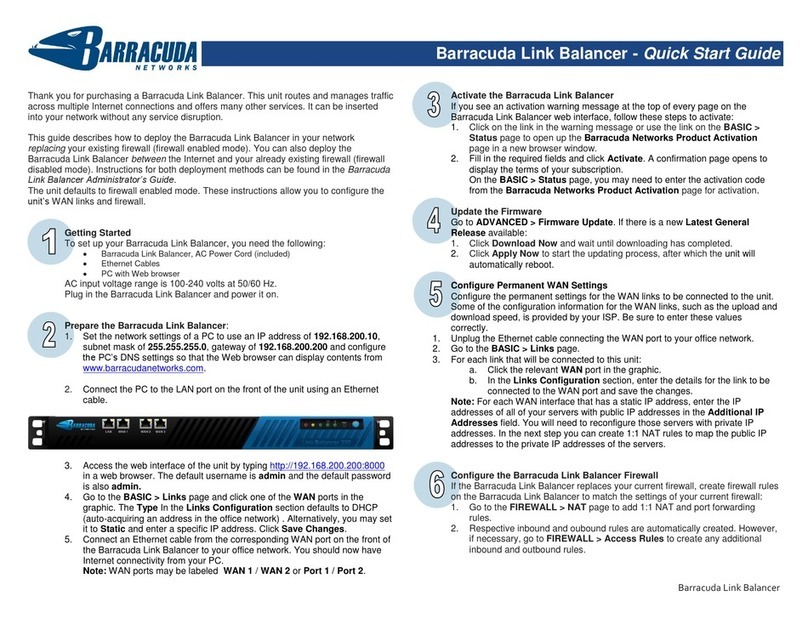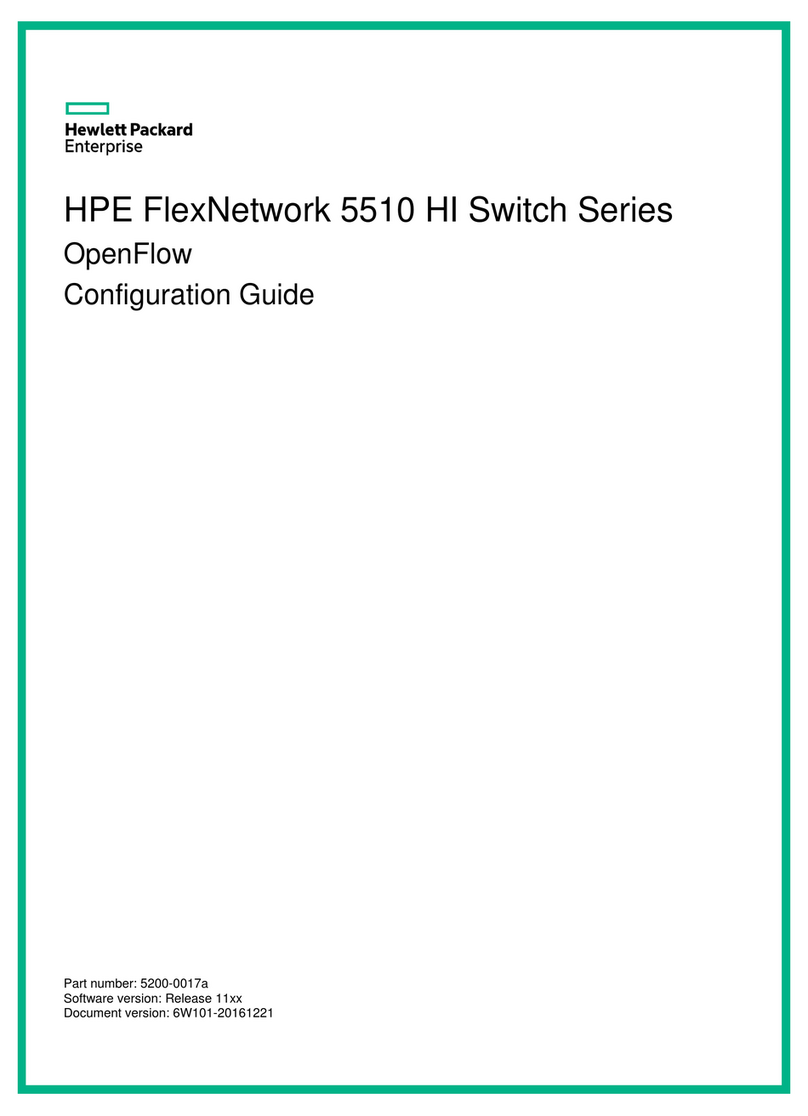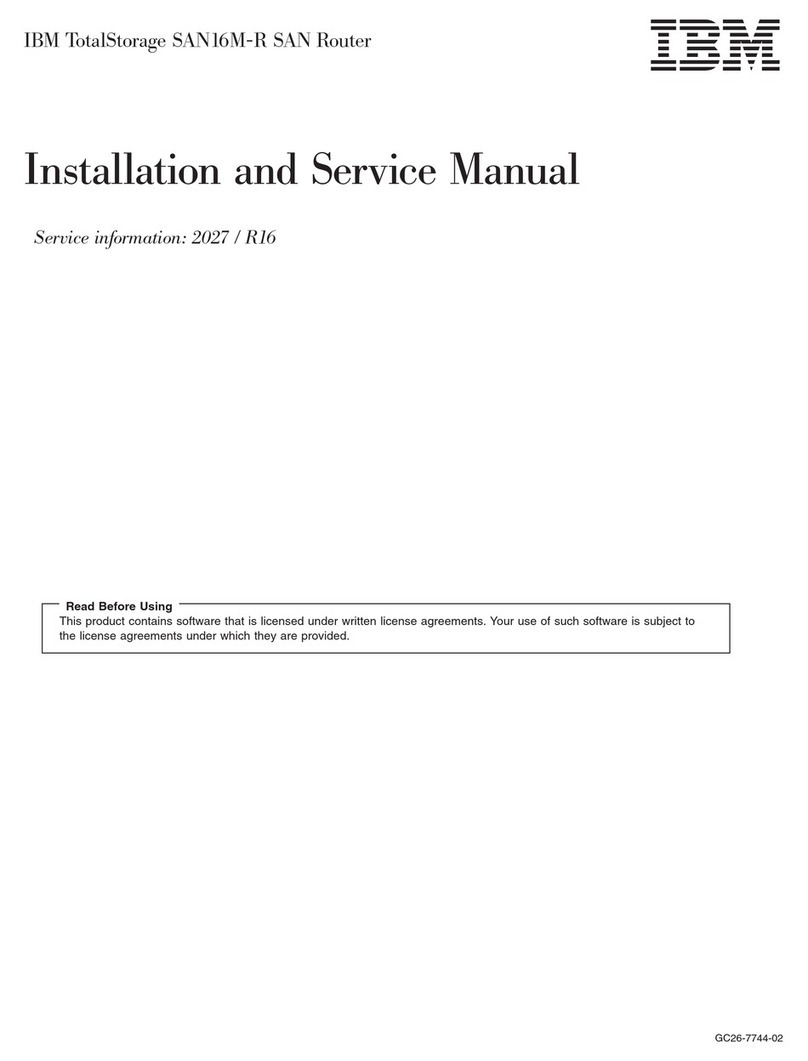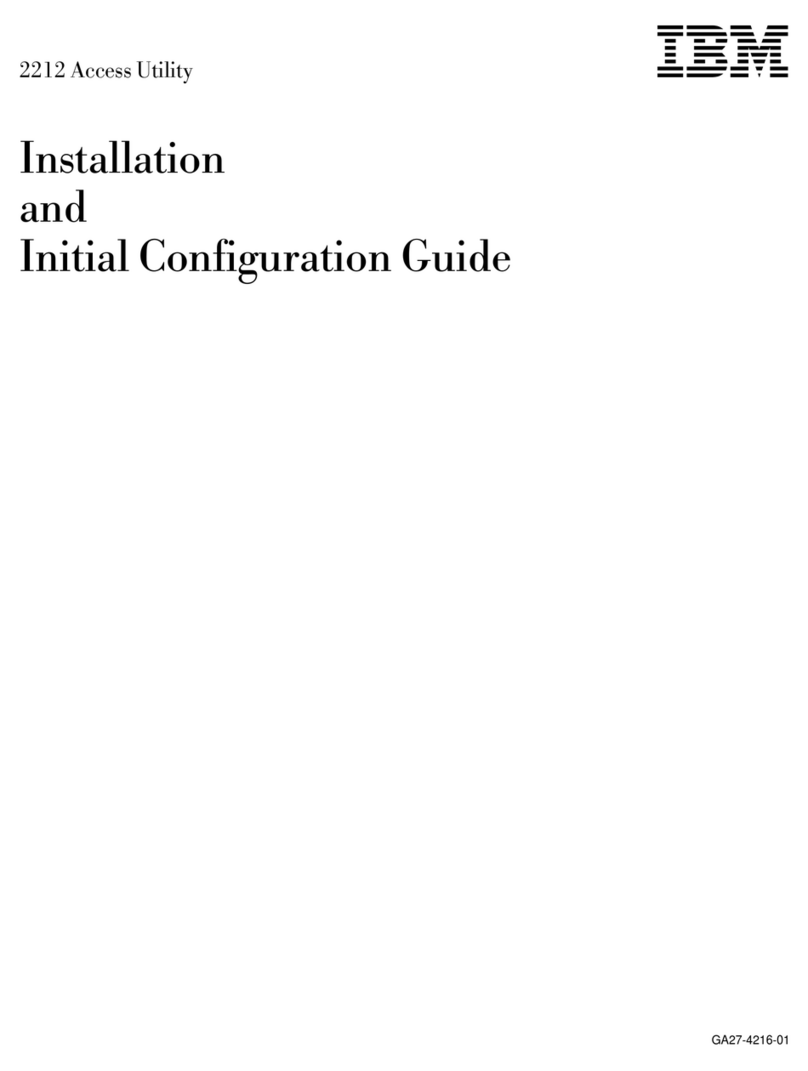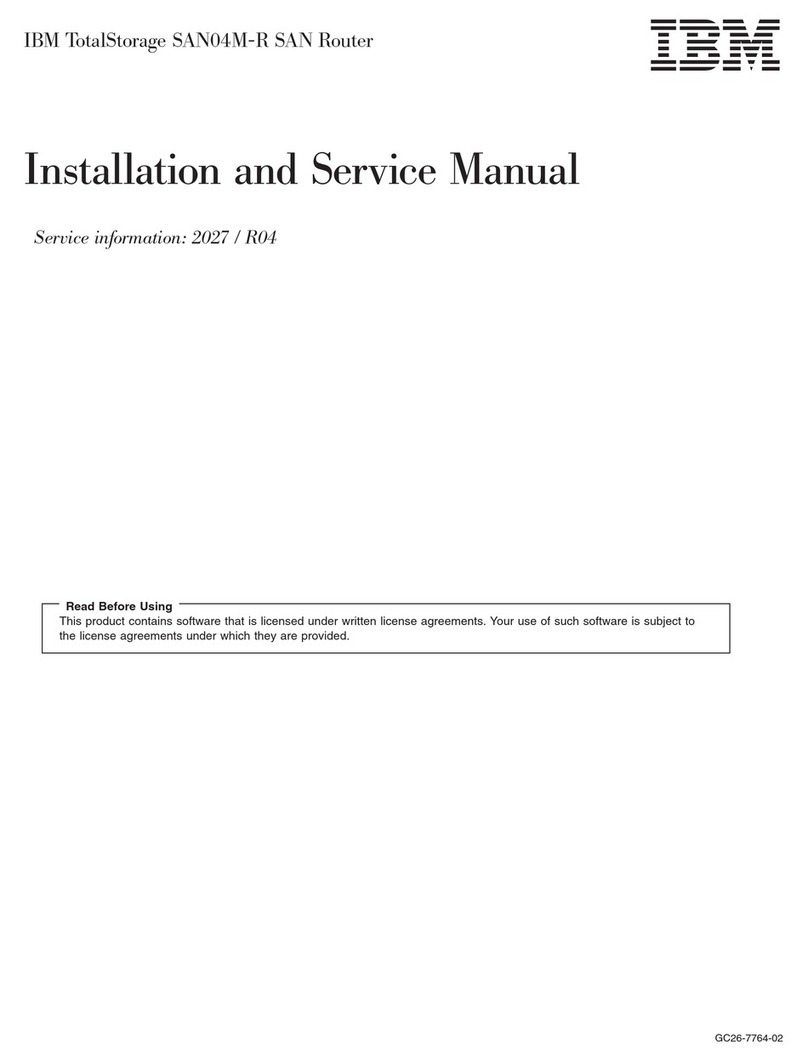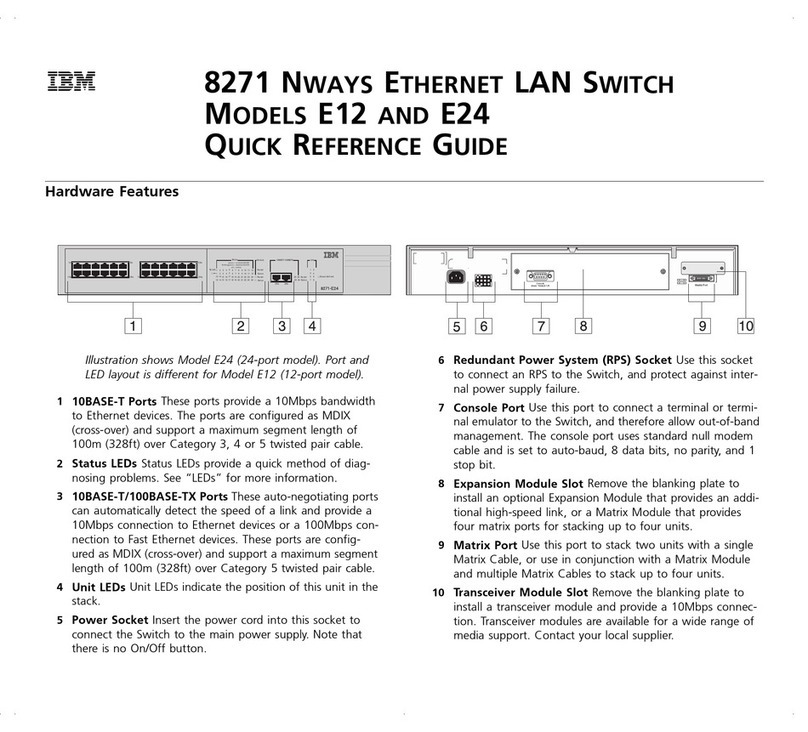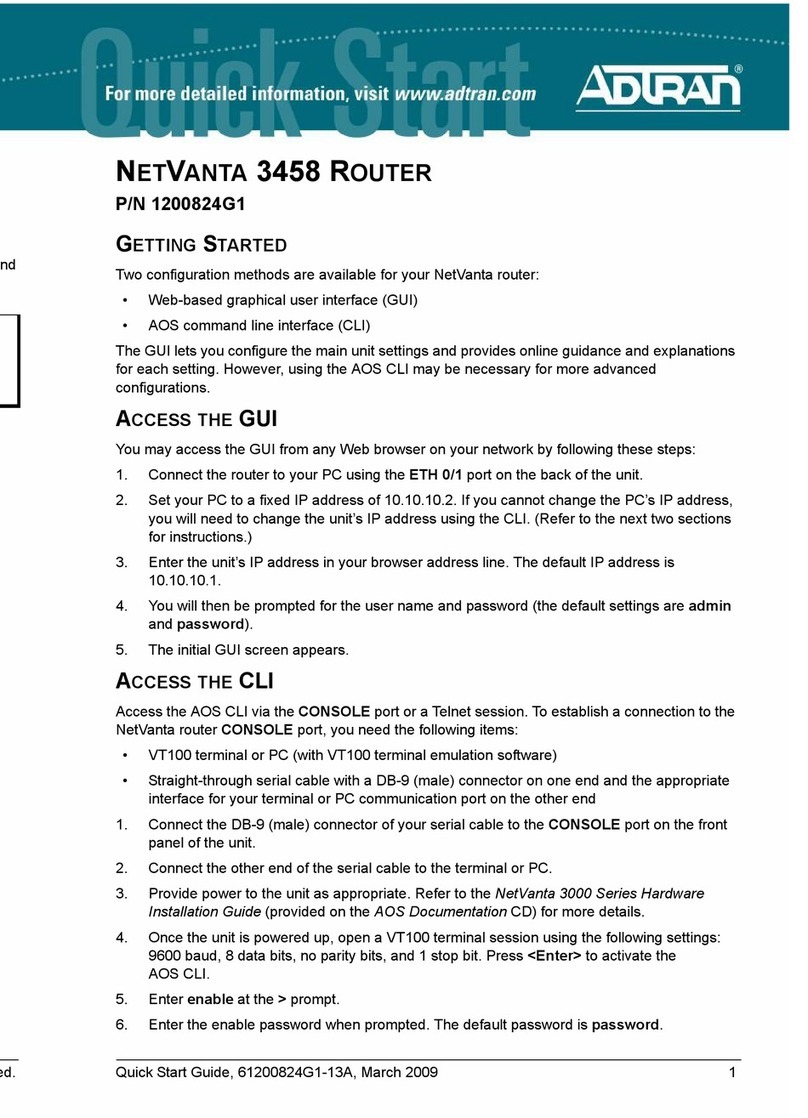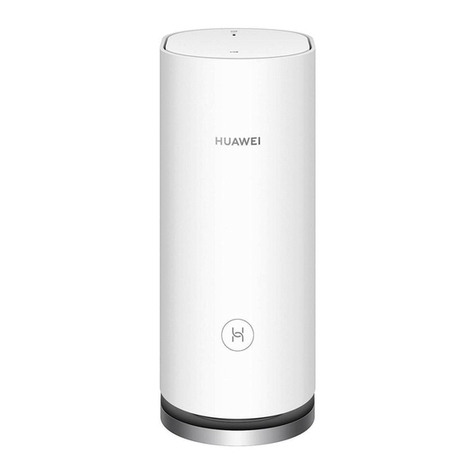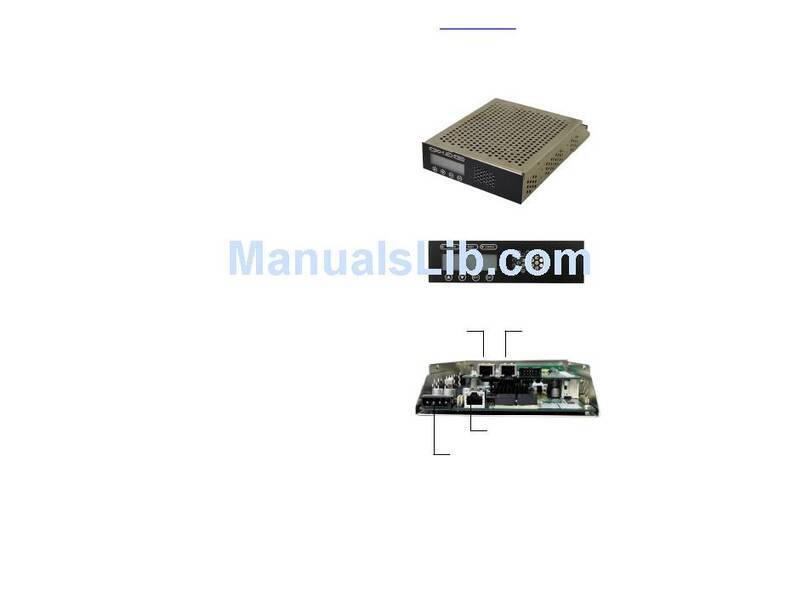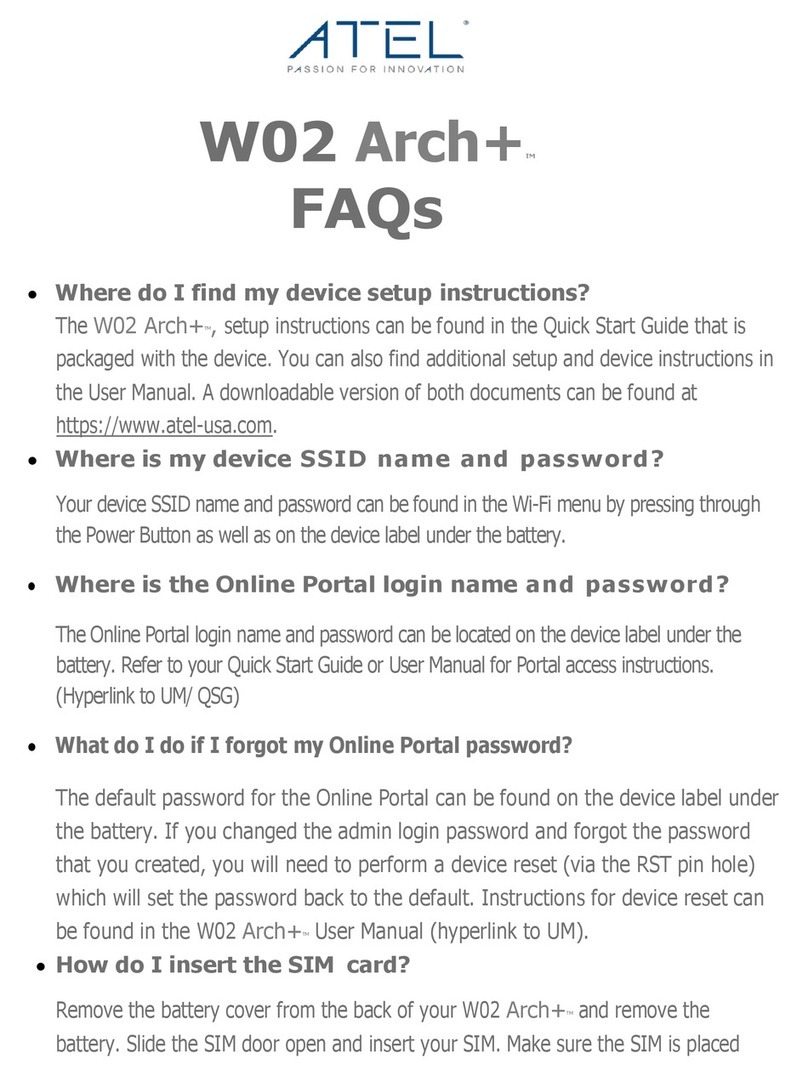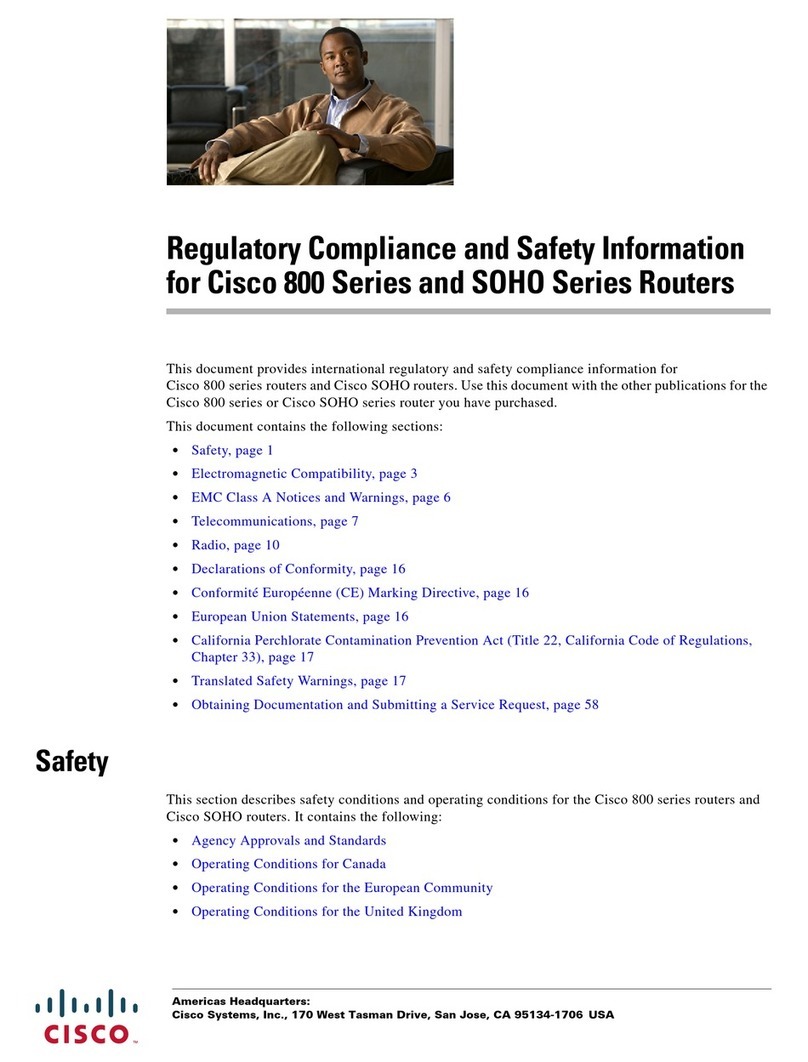
© Copyright IBM Corp. 2011 Contents 9
Stack Membership . . . . . . . . . . . . . . . . . . . . . . . . 149
The Master Switch . . . . . . . . . . . . . . . . . . . . . . 150
Splitting and Merging One Stack . . . . . . . . . . . . . . .150
Merging Independent Stacks . . . . . . . . . . . . . . . . . 151
Backup Switch Selection . . . . . . . . . . . . . . . . . . . .151
Master Failover . . . . . . . . . . . . . . . . . . . . . .151
Secondary Backup. . . . . . . . . . . . . . . . . . . . .151
Master Recovery . . . . . . . . . . . . . . . . . . . . .152
No Backup . . . . . . . . . . . . . . . . . . . . . . . .152
Stack Member Identification . . . . . . . . . . . . . . . . . . . 152
Configuring a Stack . . . . . . . . . . . . . . . . . . . . . . .153
Configuration Overview . . . . . . . . . . . . . . . . . . . .153
Best Configuration Practices . . . . . . . . . . . . . . . . . .153
Configuring Each Switch in a Stack . . . . . . . . . . . . . . . . 153
Additional Master Configuration . . . . . . . . . . . . . . . . .155
Configuring an External IPv4 Address for the Stack . . . . . . . .155
Locating an External Stack Interface . . . . . . . . . . . . . .155
Viewing Stack Connections . . . . . . . . . . . . . . . . .156
Binding Members to the Stack . . . . . . . . . . . . . . . .156
Assigning a Stack Backup Switch . . . . . . . . . . . . . . . 156
Managing a Stack . . . . . . . . . . . . . . . . . . . . . . . . 157
Upgrading Software in an Existing Stack . . . . . . . . . . . . . . .159
Replacing or Removing Stacked Switches . . . . . . . . . . . . . . . 161
Removing a Switch from the Stack . . . . . . . . . . . . . . . . 161
Installing the New Switch or Healing the Topology . . . . . . . . . . 161
Binding the New Switch to the Stack . . . . . . . . . . . . . . .162
ISCLI Stacking Commands. . . . . . . . . . . . . . . . . . . . . 164
Chapter 14. VMready . . . . . . . . . . . . . . . . . . . . . . 165
VE Capacity . . . . . . . . . . . . . . . . . . . . . . . . . .165
Defining Server Ports . . . . . . . . . . . . . . . . . . . . . . . 166
VM Group Types. . . . . . . . . . . . . . . . . . . . . . . . . 166
Local VM Groups . . . . . . . . . . . . . . . . . . . . . . . .166
Distributed VM Groups . . . . . . . . . . . . . . . . . . . . . . 168
VM Profiles . . . . . . . . . . . . . . . . . . . . . . . . .168
Initializing a Distributed VM Group . . . . . . . . . . . . . . . . 168
Assigning Members . . . . . . . . . . . . . . . . . . . . . . 169
Synchronizing the Configuration . . . . . . . . . . . . . . . . .169
Removing Member VEs . . . . . . . . . . . . . . . . . . . .169
Virtualization Management Servers . . . . . . . . . . . . . . . . . 170
Assigning a vCenter . . . . . . . . . . . . . . . . . . . . . . 170
vCenter Scans . . . . . . . . . . . . . . . . . . . . . . . . 170
Deleting the vCenter. . . . . . . . . . . . . . . . . . . . . . 171
Exporting Profiles . . . . . . . . . . . . . . . . . . . . . . .171
VMware Operational Commands . . . . . . . . . . . . . . . . .171
Pre-Provisioning VEs . . . . . . . . . . . . . . . . . . . . . . . 172
VLAN Maps. . . . . . . . . . . . . . . . . . . . . . . . . . . 173
VM Policy Bandwidth Control . . . . . . . . . . . . . . . . . . . . 174
VM Policy Bandwidth Control Commands . . . . . . . . . . . . .174
Bandwidth Policies vs. Bandwidth Shaping . . . . . . . . . . . . .174
VMready Information Displays . . . . . . . . . . . . . . . . . . . 175
VMready Configuration Example . . . . . . . . . . . . . . . . . .178
